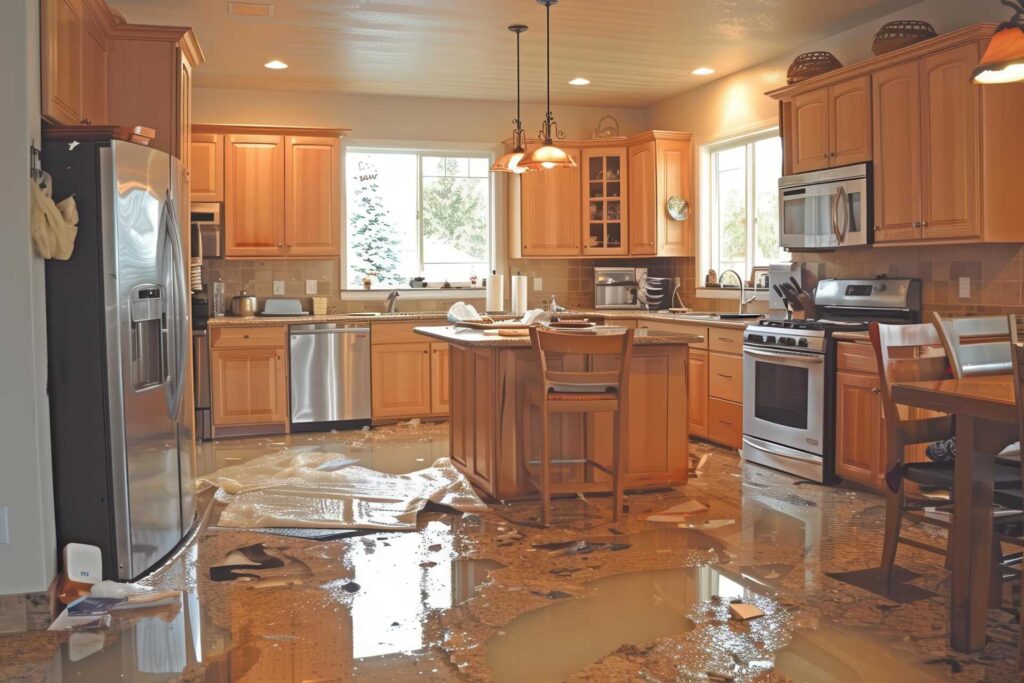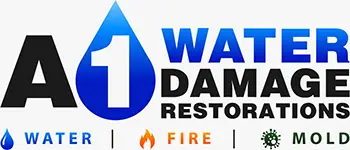
Contents
If you’ve ever wondered about the most effective ways to handle water damage in your home, consider this: water damage accounts for a significant portion of property insurance claims each year. Understanding the seven key methods for residential water damage restoration can make an essential difference in safeguarding your property and ensuring a swift recovery. From water extraction to ongoing monitoring, each step is important in returning your home to its pre-damage condition. Stay tuned to discover how these methods can help you navigate through the challenges of water damage restoration.
Key Takeaways
- Swift water extraction is crucial.
- Thorough structural drying prevents mold.
- Effective dehumidification safeguards property.
- Mold remediation is essential for post-water damage.
- Sanitization techniques ensure a safe environment.
Water Extraction
When facing water damage in your home, the initial step in the restoration process is water extraction. Whether the damage is due to a burst pipe, flooding, or a leaky roof, swift action is vital.
Flood prevention measures can help minimize the risk of water damage in the future. Regularly inspecting your home for leaks, maintaining your plumbing system, and ensuring proper drainage around your property are all essential steps in preventing potential water-related disasters.
In the unfortunate event of water damage, your homeowner’s insurance policy may cover the cost of restoration. To support your insurance claim, it’s vital to document the damage thoroughly before starting the water extraction process.
Take photographs and videos of the affected areas and items, and keep a detailed inventory of damaged belongings. Contact your insurance provider promptly to initiate the claims process and inquire about your coverage options.
Professional restoration companies have the expertise and equipment needed to extract water efficiently and mitigate further damage to your home.
They’ll use pumps, vacuums, and dehumidifiers to remove standing water and moisture from the affected areas. Once the water extraction is complete, the focus will shift to structural drying to prevent mold growth and restore your home to its pre-damaged condition.
Structural Drying
When it comes to structural drying after water damage, you’ll need to employ effective moisture detection methods to locate hidden pockets of moisture.
Proper selection of drying equipment is vital to ensure efficient drying of building materials and prevent secondary damage.
Monitoring the drying progress regularly is essential to adjust the process as needed and ensure thorough restoration of your property.
Moisture Detection Methods
Accurate moisture detection methods are crucial for effectively addressing moisture issues during the restoration process. Advanced techniques such as thermal imaging and moisture mapping can help identify hidden pockets of moisture within the structure, preventing further damage and mold growth.
| Moisture Detection Methods | Description |
|---|---|
| Thermal Imaging | Utilizes infrared technology to detect temperature variances, indicating areas of moisture retention. Ideal for locating water intrusion behind walls or ceilings. |
| Moisture Mapping | Involves creating a visual map of moisture levels in different areas of the structure. This method helps restoration professionals track the progress of drying efforts and ensure thorough moisture removal. |
Drying Equipment Selection
For effective structural drying during the restoration process, selecting the right drying equipment is vital.
When it comes to drying technology, air movers play a significant role in accelerating the evaporation of moisture from surfaces. These powerful devices work with dehumidifiers, which help remove moisture from the air.
Proper maintenance of drying equipment is essential to ensure peak performance. Regular cleaning of filters and coils, as well as checking for any signs of wear and tear, can prolong the equipment’s lifespan and maintain its efficiency.
Additionally, positioning the equipment strategically to create airflow patterns that maximize drying efficiency is key. Remember to follow manufacturer guidelines for the operation and placement of the equipment to achieve the best results.
Monitoring Drying Progress
Continuous monitoring of the drying progress is essential to effectively overseeing the structural drying process and ensuring successful restoration.
Utilizing advanced drying techniques and conducting regular moisture assessments are key components in ensuring the efficiency and effectiveness of the restoration process.
When monitoring drying progress, it’s vital to employ a combination of drying techniques such as dehumidification, air movement, and heat application to expedite the evaporation of moisture from the affected area.
By strategically placing equipment and adjusting settings based on moisture levels, you can optimize the drying process and prevent secondary damage like mold growth.
Regular moisture assessments using moisture meters and infrared cameras help track the moisture content in building materials throughout the drying process.
These assessments provide valuable data that guide adjustments to the drying equipment and techniques, ensuring that all moisture is effectively removed from the structure.
Mold Remediation
Mold remediation is an essential step in residential water damage restoration. After water damage occurs, mold can quickly grow in damp areas, posing health risks to you and your family. It’s important to address mold promptly to prevent it from spreading and causing further damage.
The first step in mold remediation is to identify and address the source of moisture that’s promoting mold growth. This could be a leaky pipe, a roof leak, or poor ventilation.
Once the source is fixed, the affected areas need to be thoroughly dried and cleaned. Professionals can effectively remove mold spores and prevent regrowth using appropriate cleaning solutions and equipment.
To minimize exposure to harmful substances, it is necessary to wear protective gear, such as gloves and masks, when dealing with mold. Professionals have the expertise and tools to safely remove mold and restore your home to a healthy environment.
Regular inspections and maintenance can help prevent future mold growth. Keeping your home well-ventilated, fixing leaks promptly, and monitoring humidity levels can all contribute to mold prevention.
Dehumidification
When it comes to water damage restoration in your home, dehumidification plays an essential role in the process.
Moisture removal techniques are employed to extract excess water and humidity from the affected areas, preventing further damage and mold growth.
Proper dehumidification is vital in ensuring thorough drying, preserving the structural integrity of your property, and safeguarding your indoor air quality.
Moisture Removal Techniques
Using state-of-the-art technology, moisture removal techniques such as dehumidification are essential in restoring properties affected by water damage.
Dehumidifiers are key tools in this process, effectively reducing air moisture levels and accelerating surface drying.
Here are three key methods used in dehumidification:
Desiccant Dehumidification: This method involves passing damp air over a desiccant material that absorbs moisture, leaving the air dry before releasing it back into the room.
Refrigerant Dehumidification: Refrigerant dehumidifiers work by cooling the air until moisture condenses out, then reheating it and returning it to the room at a lower humidity level.
Low-Grain Refrigerant Dehumidification: This advanced technique allows for even lower humidity levels by cooling the air more than traditional refrigerant dehumidifiers, making it highly effective in severe water damage scenarios.
Importance of Drying
With moisture removal techniques like dehumidification playing a pivotal role in residential water damage restoration, the importance of drying cannot be overstated. Proper drying is vital to prevent mold growth, structural damage, and potential health hazards in your home. You can expedite the drying process and minimize long-term consequences by utilizing preventive measures such as dehumidifiers and air movers.
| Importance of Drying | |
|---|---|
| Prevents Mold Growth | Reduces Structural Damage |
| Minimizes Health Hazards | Speeds up Restoration Process |
Efficient drying safeguards your property and expedites insurance claims by demonstrating proactive mitigation efforts. Thoroughly drying affected areas, even those seemingly dry to the touch, is essential to prevent lingering moisture issues. Remember, thorough drying is the cornerstone of successful water damage restoration, ensuring a safe and habitable environment for you and your family.
Sanitization
To effectively restore your home after water damage, the essential step of sanitization mustn’t be overlooked.
Sanitization is vital to eliminating harmful contaminants and bacteria, creating a safe and healthy living environment for you and your family.
Here are three key steps to achieve thorough sanitization:
- Sanitization Techniques: Utilize professional-grade sanitization techniques to clean and disinfect all affected areas thoroughly.
This may include using antimicrobial solutions, steam cleaning, or other specialized methods to ensure all surfaces are free from contaminants.
- Disinfectant Applications: Apply EPA-approved disinfectants to surfaces to kill any remaining bacteria and prevent mold growth.
Proper application of disinfectants is fundamental to ensure effectiveness in eliminating harmful microorganisms.
- Air Quality Improvement: Enhance indoor air quality by using air scrubbers or purifiers to remove any lingering odors or airborne contaminants.
This step is vital in creating a healthy environment and preventing respiratory issues.
Restoration Work
Restoration work plays a vital role in recovering from water damage and enhancing the structural integrity and aesthetic appeal of your home. When it comes to residential water damage, employing effective restoration techniques is imperative for achieving successful outcomes.
The restoration work begins once the affected areas have been sanitized and dried. This phase involves repairing and restoring any structural damage caused by water, such as warped floors, weakened walls, or compromised ceilings.
Skilled professionals use specialized equipment to detect hidden moisture and ensure thorough drying before commencing with repairs.
The restoration timeline varies depending on the extent of the damage. Minor water incursions may only require a few days to restore, while more severe cases could take weeks to complete.
It’s important to follow a systematic approach to restoration, starting with removing damaged materials, then structural repairs, and finishing with cosmetic enhancements to restore the affected areas to their pre-damaged state.
Ongoing Monitoring
Monitoring the progress of restoration work is a critical aspect of ensuring the effectiveness of the water damage recovery process. Ongoing monitoring involves implementing preventive measures and conducting routine inspections to address any issues promptly.
Here are key steps to follow:
Regular Inspections: Perform routine inspections to check for any signs of water damage recurrence or new issues. This proactive approach allows you to catch potential problems early on and prevent further damage.
Moisture Levels Monitoring: Continuously monitor the moisture levels in the affected areas. Even after the visible signs of water damage have been addressed, lingering moisture can lead to mold growth and structural issues. By monitoring moisture levels, you can ensure that the area is drying properly.
Documentation of Progress: Keep detailed records of the restoration process, including photographs and notes on the work done. This documentation not only helps in tracking progress but also serves as valuable information for insurance purposes.
Review
Implementing these seven effective methods for residential water damage restoration is like having a skilled craftsman restore a masterpiece – meticulous, thorough, and transformative. By swiftly extracting water, drying structures, remediating mold, dehumidifying, sanitizing, restoring, and monitoring, your home can return to its pre-damage state. Trust in these methods to ensure a safe, healthy, and aesthetically pleasing living environment for you and your loved ones.
Recent Posts
Top Strategies for Post-Flood Mold Removal
When faced with post-flood mold, you need to be equipped with the right strategies for
5 Best Practices for Mold Removal After Flooding
When tackling mold removal post-flooding, remember to start by inspecting and evaluating the extent of
Why Prioritize Mold Removal After Flooding?
Did you know that mold can start growing in your home within just one to
